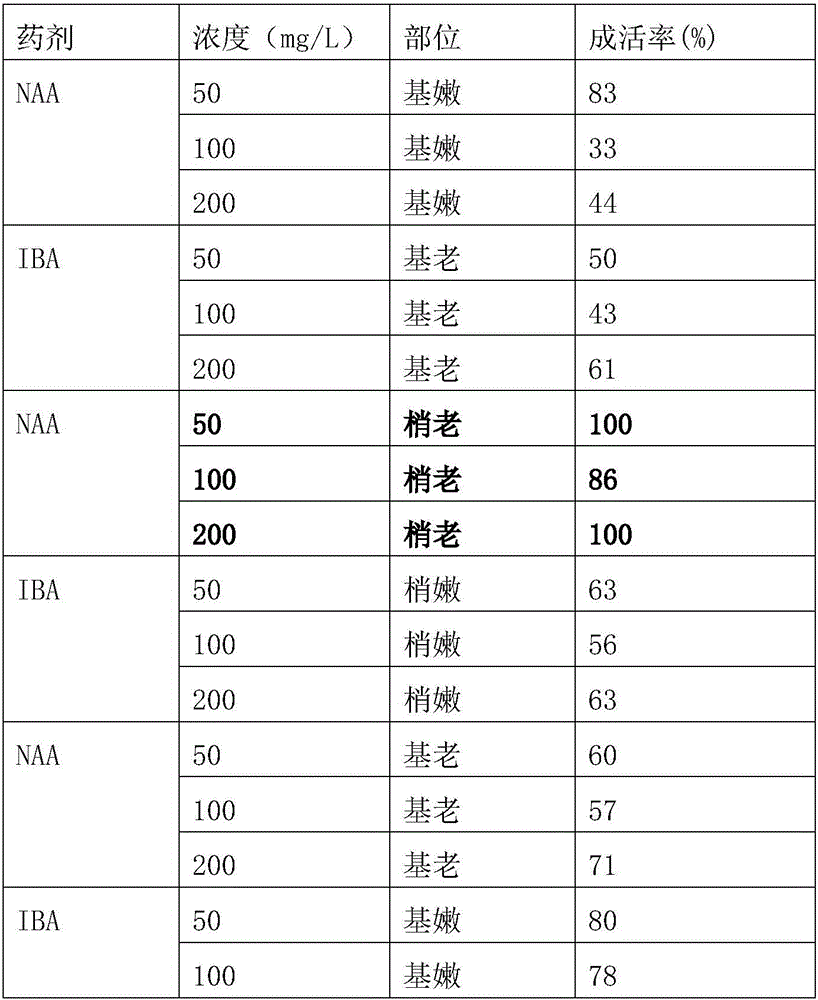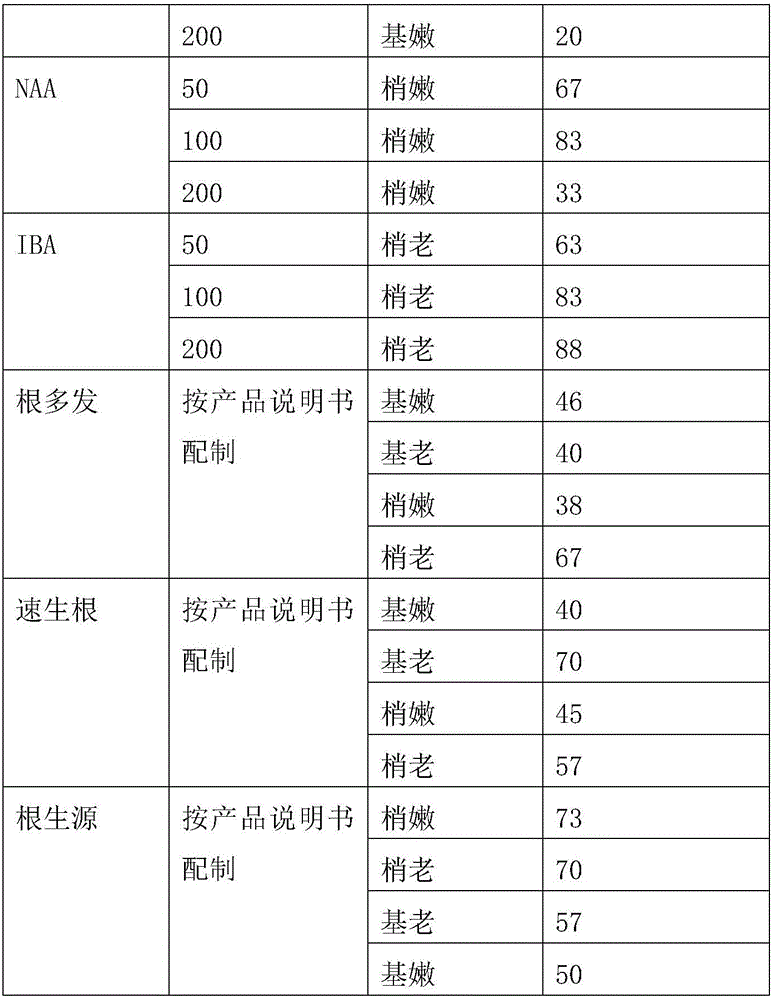High-survival-rate cuttage method of plukenetia volubilis
A technology of vine fruit and survival rate, which is applied in the field of forest cultivation, can solve the problem of low survival rate of cutting propagation, and achieve the effect of improving the survival rate of cuttings, high oil content, and maintaining excellent firmness
- Summary
- Abstract
- Description
- Claims
- Application Information
AI Technical Summary
Problems solved by technology
Method used
Image
Examples
Embodiment 1
[0018] In this example, the effects of cuttings from different parts and different chemicals on the survival rate of cuttings were compared.
[0019] (1) Materials: The cuttings are collected from the Yinqimei vine fruit plant at the Puwen Base of Jinghong City, Xishuangbanna, Yunnan Province. When cutting, the cuttings are divided into: base branches and tip branches. Branches below the main stem of 0.5m, the tip branches are branches growing more than 1m away from the base of the main stem of Yinchimei vine fruit. Two types of branches are subdivided:
[0020] The base branches are divided into: base old cuttings (hereinafter referred to as base old) and base tender cuttings (hereinafter referred to as base tender), and the base old cuttings are base branches within 25cm (including 25cm) from the base of the base branches (post master Stem clipping), the base tender cuttings are base branches above (excluding 25cm) above the base of the base branch.
[0021] Tip branch is ...
Embodiment 2
[0032] (1) The material was collected from the Mojiang Naha planting base in Pu'er City, Yunnan Province, and the clipping method was the same as Example 1.
[0033] (2) Cutting time was January 16, 2015 (cutting at two o'clock in the afternoon), January 17, 2015 (cutting at half past one in the afternoon), and all the other methods were the same as in Example 1.
[0034] (3) Results
[0035] After about 2 months, statistics were carried out on March 22, 2016. The data are shown in Table 2:
[0036] Comparison of various cuttings and medicinal cutting effects in table 2 embodiment 2
[0037]
[0038]
[0039] Table 2 shows: the old cuttings (old shoots) that the present invention chooses are the tip branches within 25cm (including 25cm) from the tip branch base, after soaking the cutting base for 2 hours with a concentration of 50~200mg / L NAA aqueous solution Cuttings, the survival rate is significantly higher than other cuttings, as high as 92 to 100%.
[0040] In or...
PUM
 Login to View More
Login to View More Abstract
Description
Claims
Application Information
 Login to View More
Login to View More - R&D
- Intellectual Property
- Life Sciences
- Materials
- Tech Scout
- Unparalleled Data Quality
- Higher Quality Content
- 60% Fewer Hallucinations
Browse by: Latest US Patents, China's latest patents, Technical Efficacy Thesaurus, Application Domain, Technology Topic, Popular Technical Reports.
© 2025 PatSnap. All rights reserved.Legal|Privacy policy|Modern Slavery Act Transparency Statement|Sitemap|About US| Contact US: help@patsnap.com



